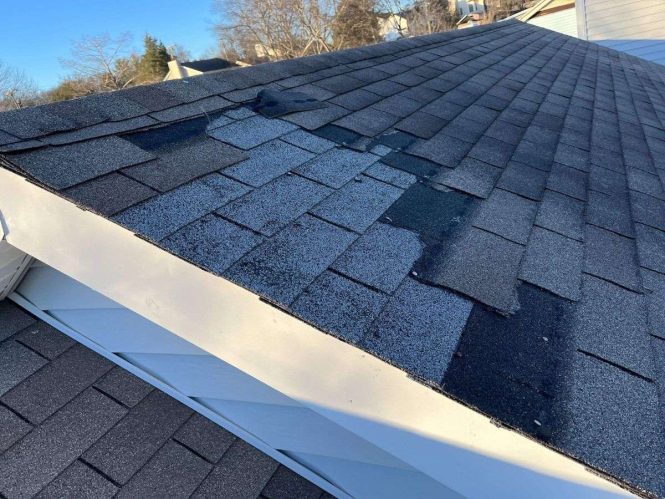

Handling roof wind damage is a critical task for homeowners facing severe weather events. A damaged roof can lead to significant water damage, interior mold growth, and structural issues, jeopardizing the safety and stability of your home. This article will provide a comprehensive guide to assessing, repairing, and ultimately preventing roof damage during windstorms. We’ll cover crucial steps from initial damage assessment to filing insurance claims and preventive maintenance strategies. This comprehensive guide will cover the following aspects: damage assessment, insurance claims, repair process, and preventative measures.
Assessing the Damage
Visual Inspection
A thorough visual inspection is the first step in handling roof wind damage. Carefully examine the roof’s surface for missing, damaged, or displaced shingles, flashing, and vents. Pay close attention to areas around chimneys, skylights, and valleys. Look for signs of water damage, such as discoloration, pooling, or water stains inside the home. Note any missing or damaged structural components like rafters, trusses, or plywood sheeting. Document all findings with photographs and detailed notes. These records will be essential for insurance claims and repair work.
Identifying the Source of Damage
Pinpointing the source of the damage is crucial. Did high winds cause damage or did another force damage the structure? Consider factors like wind speed, direction, and duration during the storm. Did the storm involve hail or other debris that could have damaged the roof? Knowing the source helps determine the extent of repairs and preventive measures to take.
Structural Damage Evaluation
After the initial visual inspection, evaluate the roof’s structural integrity. Look for signs of buckling, twisting, or bending of support beams and rafters. These elements can cause significant problems if not addressed immediately. If you’re unsure about any structural issues, consult with a qualified roofing contractor, immediately.
Filing an Insurance Claim
Understanding Your Policy
Carefully review your homeowner’s insurance policy to understand the coverage for windstorm damage. Knowing your policy limits and exclusions can save you time and frustration during the claims process. Review deductibles and the steps you need to take to file a claim.
Gathering Evidence
Thorough documentation is vital for a smooth insurance claim process. Document the damage, take photos from various angles, and obtain estimates from reputable contractors. These details will serve as irrefutable evidence of the extent of the damage and justify your claim.
Repairing the Roof
Choosing a Contractor
Select a qualified and experienced roofing contractor with a proven track record. Check their certifications, licenses, and insurance. Get multiple estimates and compare services before making a final decision.
Repair Procedure
Professionals will assess the damage and explain the repair process. They will determine the best course of action, using approved materials. This may include replacing damaged shingles, flashing, or structural elements, as necessary. Thorough clean-up is crucial after the repair is complete to ensure there is no further damage.
Preventing Future Damage
Regular Roof Maintenance
Regular maintenance can greatly reduce your risk of roof damage from future storms. Schedule routine inspections by a qualified professional to identify potential issues before they escalate. Keep gutters and downspouts clear to prevent water damage to the roofing and the house’s foundation.
Protective Measures
Consider installing reinforced roof coverings, straps, or accessories designed to withstand high winds. Protective measures, like reinforcing your roof’s structure with storm straps, can improve its resistance to severe weather. Reinforcing your home’s overall structure also is a good step to consider.
Seeking Professional Help
Emergency Services
In the case of significant wind damage, contact emergency services immediately if the situation requires. Ensure your home’s safety and structural integrity are properly evaluated and addressed during emergencies.
Professional Assessment
If you have any doubts about the extent of the damage or appropriate repair procedure, consult with a professional to determine the best course of action. Roofing professionals can provide expert guidance and recommendations.
Additional Tips
Consider Insurance
Be proactive in considering your options when planning for wind damage. Assess your homeowners insurance policy and consider increasing coverage or purchasing additional protections.
Contact Experts
It is wise to seek expert advice when you need to file a claim. Check your homeowners insurance for the correct protocol on filing claims.
Proactive Measures
Conduct regular inspections to mitigate future damage. This preventative care helps to save on future damage costs.
Frequently Asked Questions
What is the best way to assess wind damage to my roof?
Conduct a thorough visual inspection, noting missing or damaged shingles, flashing, and structural components. Document your findings with photos and detailed notes. If you’re unsure about structural damage, immediately consult a qualified roofing contractor.
How long does the insurance claim process typically take?
The insurance claim process can vary depending on factors like the extent of the damage, your insurance provider, and their procedures. Be prepared for potential delays, and maintain clear communication with your insurance representative.
In conclusion, handling roof wind damage effectively requires a proactive approach. Thorough assessments, swift repairs, and preventative measures are crucial to mitigating future damage. By following the steps outlined in this article, you can protect your home and belongings from the devastating effects of windstorms. Contact a certified roofing contractor today for a free inspection and quote to get started with repairs.